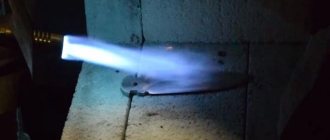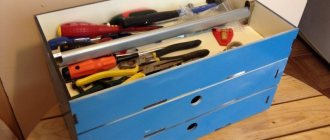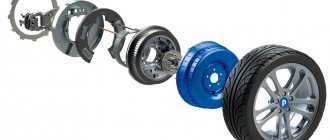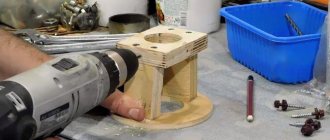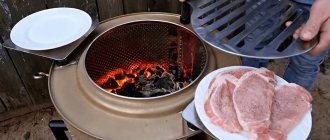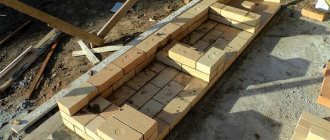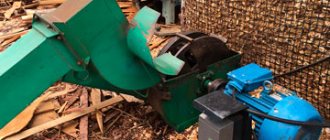Relaxing with family or friends in nature is often accompanied by cooking barbecue. But no one will take a stationary cooking unit with them. Making a fire on the ground is also not an option - in windy summers this can cause a fire. It is much more convenient to get a folding grill made of metal.
It is perfect for picnics and hiking trips. It's easy to make it yourself. You just need to follow the step-by-step recommendations of the masters.
Types of folding barbecues
There are two types of transformers most often found on the market:
Brazier-suitcase
It is also called a mangal-diplomat. Compact design, folded into a flat suitcase. Most models have a handle that makes the barbecue easy to carry in your hands. A steel diplomat does not take up much space, fits easily into the trunk, and does not require much time to assemble.
Of the minuses, it is worth noting a large number of fasteners. The hinges, rollers or screws they use are usually the first to fail. It all depends on the quality of the product.
Brazier-book
He’s also a grill-laptop. It's easy to open and fold back, plus it has minimal hinges and rivets. The main disadvantage of this design is the triangular shape of the roaster. In order for the burning coals to be at the desired level, they need to be poured in a larger volume compared to classic rectangular barbecues.
Advantages and disadvantages
Folding barbecues are in deserved demand due to a number of advantageous features:
Light weight
This is one of the main requirements for camping models, since not everyone goes out into nature by car. This condition is met by reducing the thickness of the walls of the device. It is important to strike a balance between lightness and durability.
Compact dimensions when folded It is convenient to carry in your hands or bag, or put in storage. The size of the case also depends on the amount of metal. The thicker the walls, the larger the dimensions of the structure.
More durable than collapsible ones
High-quality barbecue suitcases use steel sheets with a thickness of at least 1.2 mm. The walls of the firebox do not burn out longer, retain heat better and do not deform longer. The latter is especially important, since the distortion of the walls will make it impossible to assemble the barbecue into a neat case.
Extended equipment
Some manufacturers provide additional work surfaces, skewers, and grill grates in their barbecue models. This is convenient because all elements are adjusted to size. Plus, when purchasing one device, the buyer immediately receives tools for frying meat.
Original designs
There are camping barbecues of unusual designs that have real operating experience. For example, in the bottom photo there is a portable version in the shape of a truncated trapezoid.
Although folding barbecues usually do not have decorative decorations to lighten the weight, some products have unusually shaped holes to ensure traction and good combustion of the coals located inside.
The universal design of a stainless steel barbecue can also work as a regular barbecue with skewers, weighs a little more, and has additional body elements.
Thus, from a variety of folding and collapsible barbecues, a home craftsman can choose a design that is optimally suited for specific operating conditions in order to manufacture it on his own.
Source
Criterias of choice
Before purchasing a barbecue, we recommend that you pay attention to the following parameters.
Material
The best solution is AISI 340 stainless steel. It is resistant to corrosion, is an environmentally friendly material, resistant to high temperatures, and is lightweight. However, a stainless steel device is more expensive than rolled steel, which is widely used for the manufacture of portable braziers.
Length
In folding models, this figure varies from 40 to 60 cm. The length of the brazier determines how many skewers can be placed over the smoldering coals at the same time.
Double bottom
Some manufacturers equip suitcase grills with an additional bottom, where ash from burnt coals is collected. And the air gap between two sheets of metal provides more even heat.
Below we have compiled for you a rating of the best models of barbecue suitcases, and have also prepared instructions with which you can make a transforming barbecue yourself.
Tools for work
The most common advice to beginners: it’s better to have all the equipment at once than to run a thousand times later! Therefore, carefully ensure that you have all the items in stock:
- Bulgarian;
- welding machine;
- roulette;
- drill with an attachment for drilling metal.
When you are convinced that everything you need is at hand, we proceed to choosing the main material.
Do it yourself (instructions)
A folding barbecue suitcase, needed outside the city, can be made with your own hands. We have prepared detailed step by step instructions. As a result, you will get something like this:
The basis for the structure will be a 25 mm corner. It will be 600x400 mm. First you need to mark, then move on to the band saw.
If you don’t have this or that tool in your arsenal, this does not mean that it is impossible to repeat this or that design. For example, this operation can be easily performed using the most ordinary grinder. But if this tool is not in stock, then the remaining option is a hacksaw. Oh, you'll suffer with her.
Cut all the necessary blanks. You should try to save metal.
Weld the base. To obtain an angle of 90 degrees, a primitive and fairly accurate method is used. Attach the blanks to the pre-welded profile pipes using clamps.
For the future, it is recommended to make a normal corner clamp. It will be easier this way and it will take much less time to work.
Boil the outer corners in the same way, after chamfering them.
Next comes the processing of the seams on the grinder. For example, when making sheathing on a homemade lathe, this technique shows good results. This way the workpiece turns out smoother.
The next stage is making the bottom. Like the entire structure, it must be cut from a 2 mm sheet of metal. This thickness should be enough. If not, you can always add stiffeners.
To ensure a tight fit of the sheet to the frame of the corners, it should be made a little smaller in size.
If the leaf is not fresh, it is recommended to clean it with a grinder. This will make it much easier and more pleasant to work with him in the future.
Check everything locally. It should fit perfectly.
Attach the bottom using electric rivets. To do this, mark and drill 6 mm holes.
Now weld the bottom through them to the base on the sides.
Next, work on the legs. Their length will be 550 mm and they will be removable. They are attached to the base using an M12 thread. To do this, you need to make nuts from a 20x20 mm square. Of course, you can simply weld larger versions, but the easy way is not always the best. Moreover, their production will not take much time.
Using the same principle, make plugs for the ends of the pipe and weld them in, after installing a piece of thread inside.
The nuts should also be welded to the base, maintaining an angle of 90 degrees.
As a result, the main structure turns out to be quite rigid and stable.
Since the grill must be mobile, now you should work on the folding wall. Weld a couple of corners to the two main ones. They provide additional rigidity and act as fasteners for the walls.
You should try to hide all the welding: it’s more beautiful and there will be more space inside.
The metal itself will definitely react when heated. To do this, we weld stiffeners from a 15 mm pipe. Let's cut it at an angle of 60 degrees.
Next, drown it, process it on a homemade grinder, and weld it.
Make markings for skewers. As practice shows, 50 mm from the edge and 90 mm between them is a lot, you need to take a little less. The height of the walls of the grill should be optimal: 125 mm - just right.
Make slits at the ends of the corners. With their help the side walls will be attached.
The folding parts are completely ready. You can install them on awnings (purchase at hardware stores, one piece costs about 35 rubles). There is no need to resort to the services of a lathe.
First prepare the area for the awnings. It will be much more accurate to do this with a homemade drill.
Go to the side walls. To fasten them in the grooves, use the most ordinary m8 bolts. Adjust so that the wall fits freely and secure temporarily with superglue.
When cutting the thread, they will no longer turn.
The middle insert is made in the same way. Initially it sits tightly, but whether it’s good or bad can only be known after the first frying.
Ready-made handles of a suitable color and elegant shape fit perfectly into the overall style of the barbecue. True, sometimes you have to grind it down a little.
Everything is ready for painting. Degrease and take the product outside. It is better to paint with heat-resistant enamel up to 1000 degrees in two layers.
While the paint is drying, you can quickly sew a cover for the skewers. It is very convenient when they lie in their place, in the grill.
Now everything folds inward.
The weight of the barbecue is a little more than 20 kg.
It comes together in literally a matter of minutes. With such a barbecue, cooking outdoors is much safer.
Photo gallery of finished products
An example of a prefabricated steel grill. The legs are made of metal corners. All parts are inserted into the grooves.
Photo: this design can be bought in every supermarket.
This photo shows a small kebab maker with a sliding stand for a cauldron. Material – stainless steel.
Photo: grill with a stand for a cauldron. This product is more reliable and will last longer. But less compact, heavier. Metal thickness 2 mm.
Factory version of a collapsible diplomat. Complete with a cutting table and grill grate.
Homemade structures of various sizes made of iron.
Photo: durable products made from 5 mm sheet metal. They will last a long time, the main thing is to protect them from corrosion.
Drawings with dimensions
Examples of different designs:
There are also drawings with dimensions in the next chapter.
